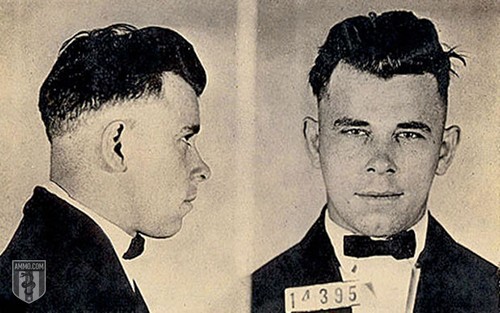Post by torpedo on Sept 2, 2019 22:03:33 GMT
Federal Firearms Act of 1938: Signed Into Law June 30, 1938

The 1930s were tumultuous years. FDR’s New Deal was rebuilding a struggling America in the face of a well-armed wave of organized crime. John Dillinger was one of the most infamous criminals of the era who used not only machine guns, but other assorted weapons on a crime spree that spanned eight states. Between 1933 and 1934, John Dillinger and his so-called Terror Gang robbed a dozen banks, stole more than $500,000, nearly $9 million in 2016 dollars, killed 11 people and managed to escape from prison on three separate occasions. The crime spree finally ended on June 30, 1934, when federal agents tracked Dillinger to a movie theater in Chicago. Dillinger drew his Colt .380 in an attempt to escape and was cut down by a hail of gunfire from law enforcement. On the fourth anniversary of Dillinger’s death, Congress passed Public Law 75-785, the Federal Firearms Act of 1938, which expanded recordkeeping and accountability for all firearms importers, manufacturers and dealers and placed restrictions on gun ownership. It expressly aimed to regulate interstate and foreign commerce in arms and encompassed not only the guns themselves, but also any silencers or mufflers, ammunition, cartridge cases, bullets and propellant powder. It stated that:
Only dealers or manufacturers possessing a license could transport, ship or receive firearms or ammunition in interstate or foreign commerce. The license was $25 per manufacturer and $1 for dealers.
Dealers and manufacturers could not ship or transport firearms to anyone under indictment, convicted of a crime or considered a fugitive from justice.

The 1930s were tumultuous years. FDR’s New Deal was rebuilding a struggling America in the face of a well-armed wave of organized crime. John Dillinger was one of the most infamous criminals of the era who used not only machine guns, but other assorted weapons on a crime spree that spanned eight states. Between 1933 and 1934, John Dillinger and his so-called Terror Gang robbed a dozen banks, stole more than $500,000, nearly $9 million in 2016 dollars, killed 11 people and managed to escape from prison on three separate occasions. The crime spree finally ended on June 30, 1934, when federal agents tracked Dillinger to a movie theater in Chicago. Dillinger drew his Colt .380 in an attempt to escape and was cut down by a hail of gunfire from law enforcement. On the fourth anniversary of Dillinger’s death, Congress passed Public Law 75-785, the Federal Firearms Act of 1938, which expanded recordkeeping and accountability for all firearms importers, manufacturers and dealers and placed restrictions on gun ownership. It expressly aimed to regulate interstate and foreign commerce in arms and encompassed not only the guns themselves, but also any silencers or mufflers, ammunition, cartridge cases, bullets and propellant powder. It stated that:
Only dealers or manufacturers possessing a license could transport, ship or receive firearms or ammunition in interstate or foreign commerce. The license was $25 per manufacturer and $1 for dealers.
Dealers and manufacturers could not ship or transport firearms to anyone under indictment, convicted of a crime or considered a fugitive from justice.
Trade in stolen firearms or guns that have had the manufacturer’s serial numbers removed was illegal.











